
|
|

|
YOU ARE HERE:>>General Information>>Scarabs by Franco Magnarini, section 2
TYPICAL FEATURES ACCORDING TO PERIODS
The following indications are only a small part of dating characterizations and are not to be considered as a complete nor absolute rules, the problem of dating being much more complex: many variants come into play.
Abbreviations: Th = Thotmose; Am = Amenhotep; Rm = Ramses
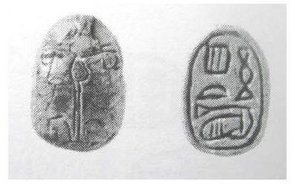
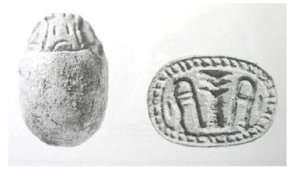
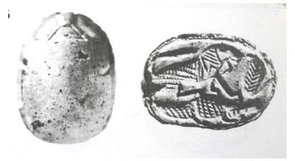
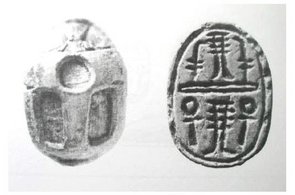

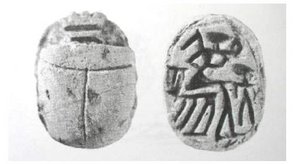
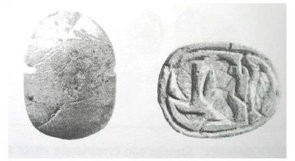
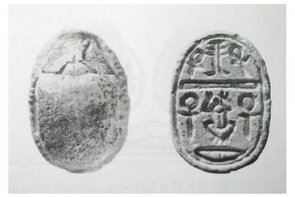
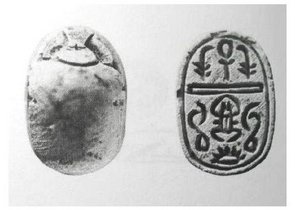
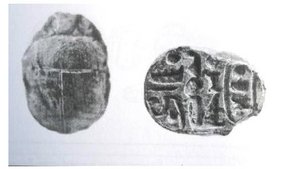
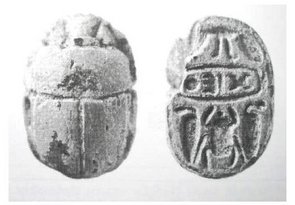
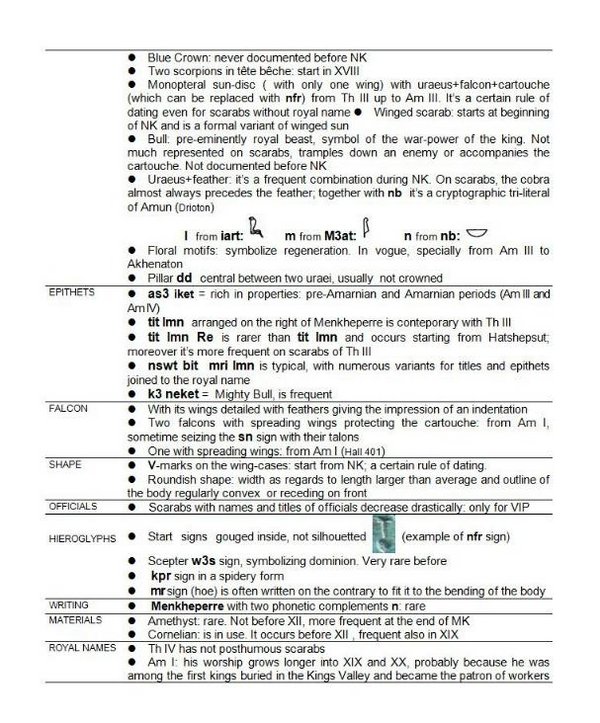
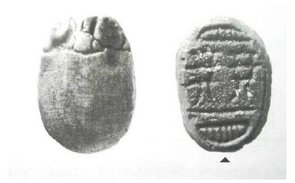
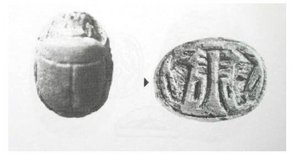
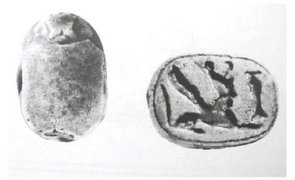
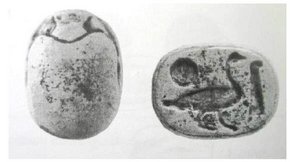
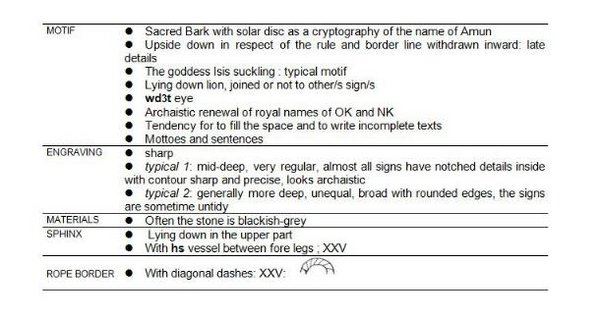
Dating: more pointers.
The main difficulty in the study of scarab seals is in dating them. Dating is very important in the various types of information individual scarabs can provide us with.
The most certain way to date a scarab might be thought to be finding it in a precise archaeological context. Even in this case however, there's nothing to prevent the scarab from being more ancient than the place or stratum it was found in. Often scarabs form part of a collection of objects inherited by the deceased and which were buried with them. Among the recoveries from the tomb of Tutankhamun was catalogued a scarab with the name of Tuthmosis III, one his ancestors who died almost a century before his enthronement (in the group called by Carter "heritage of family" – inventory 1a -) (1). In the same group there were many other objects bearing the names of preceding kings or members of the royal family.
We also cannot leave out the opposite instance: scarabs placed into more ancient graves on the occasion of a transfer of mummies and grave-fittings made much later in order to avoid the objects being plundered by tomb robbers.
Scarabs come largely from the antiquarian market and without any archaeological connection. Many collections, even in museums, have been formed by this means. Petrie himself declared that during his first years of stay in Egypt he bought about a hundred scarabs with royal names every year; now they are in the Petrie Museum at the University College at London.
Not even the inscribed name is a certain criterion of dating: some Pharaohs were deified and their scarabs were manufactured many years after their death. A well-known example is Tuthmosis III: scarabs with his name have been manufactured for up to a thousand years after his death. The worship of Amenhotep I, the second king of the XVIIIth Dynasty continued until the XXIIth Dynasty, so it is not rare to find his posthumous scarabs as well.
The names of Snofru, Cheops, Chefren, and Unis of the IVth and Vth dynasties occur only on scarabs manufactured in the XXVIth dynasty as commemorative objects..
Dating, then, must follow other criteria which take into account a lot of variables. Almost all students have classified the shape, trying to find a connexion between the shape and the date but obtaining scanty results. In fact, the substantial conservatism of ancient Egyptians means we meet the same shape repeatedly in different times. But some observations related to the shape can be useful. If the back seen in profile shows the highest point at the elytra with the pronotum and tail rather lower, and the width in respect of the length larger than the general rule, the scarab in all probability belongs to the XVIIIth Dynasty (2).
Legs notched and jutting out from the body, rings strengthening the threading-holes, dimensions above the average, the T trace of the elytra upon the back engraved with double lines, the U-shaped incisions (instead of V-shaped) upon the elytra and the lengthened shape with the profile lowering towards the hind part are frequent characteristics in the Ramesside dynasties (3).
Cutting through between front and middle legs point to a dating to the TIP (4), while the Y-shaped delineation of the elytra upon the back (5) or the smooth back with a narrowing between pronotum and elytra suggest a dating to Late Period (6).
These are not conclusive indications but can be of assistance.
As to the engraved motifs it is possible to find a better correlation between design and date: though one can only speak of larger frequencies of certain motifs in certain epochs. For example, the "rope-border" is characteristic of the XIIth Dynasty, then disappears, but comes back into fashion from the XIXth to the XXVIth, especially associated with human and mythical figures or animals (7).
In the MK representations of gods are not documented, while names and titles of officials are frequent but disappear almost completely in NK.
The "en-ra" formulae seem confined to the Hyksos period, but there are such patterns in the NK and TIP. Pictures of animals were introduced by the Hyksos together with falcon-headed demigods, sphinxes and crocodiles. Hieroglyphs profiled and not gouged out are characteristic of a period prior to NK, starting from which them begin to be hollowed out. (See illustrations in article above)
![]() The cryptographic writings of the name of Amun are also documented only starting from NK. The scenes with the king depicted in presence of gods (Amun, Maat, Mont, Ptah) (8) or triumphant defeating the enemy are Ramessid.
The cryptographic writings of the name of Amun are also documented only starting from NK. The scenes with the king depicted in presence of gods (Amun, Maat, Mont, Ptah) (8) or triumphant defeating the enemy are Ramessid.
The absence of the contour line on the base or shifted inwards is characteristic of TIP, just like the xpr sign engraved with the legs detached from the body.
Isis suckling is a subject almost exclusive of LP.
Also materials can give only general rules, being been utilized during different epochs; a certain degree of uncertainty always remains. In reality, absolute certainty of dating is rare: though students agree that the V-shaped notches engraved upon the elytra (to indicate the Humeral Callosities) are not documented prior to the XVIIIth Dynasty. The Blue Crown is represented only starting from NK (9). The God Seth never appears on scarabs before the Ramesside period (10).
Dating remains therefore a problem and one must formulate a dating hypothesis with a great circumspection. All elements of observation are to be kept in mind: shape, motif, material, dimensions. Each of them interacts with the others and they can lead to acceptance or exclusion of formulated dating hypotheses. It also must be kept in mind that, if all goes well, the best approximation will be the period of reign.


Home | About This Site | Privacy Statement | Gallery | Testimonials | Guarantees
About Collectors' Resources pages | What's New
Search | Site Map | Contact Us